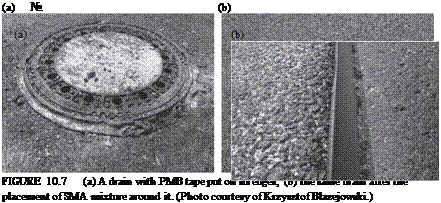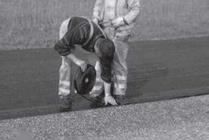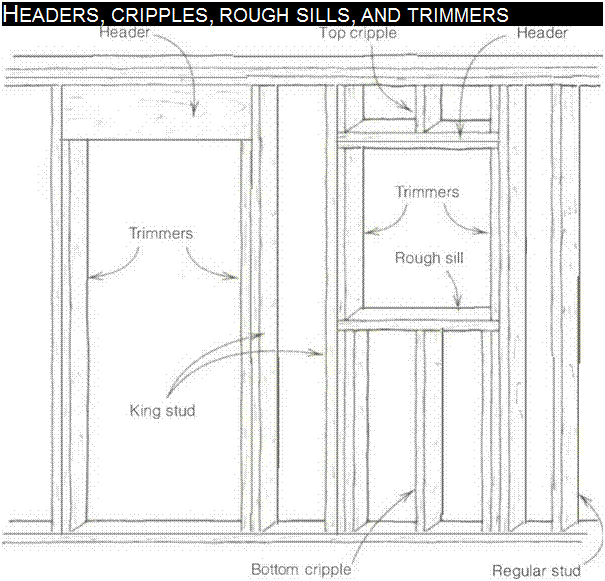Preparing Pavement Facilities
The existing pavement facilities should be prepared prior to placing the mixture of a wearing course. This preparation should result in the following:
• Appropriate, tight, and durable bonding between asphalt course and facilities (e. g., with the use of suitable polymer modified asphalt tapes [Figure 10.7])
• Protection against damage or infiltration of excess asphalt mixture (e. g., around a drain or manhole)
10.2.5 Preparing Edges of the Courses
The edges of the course should also be prepared. The selected method should ensure durable joints at the transverse and longitudinal edges. Most previous experiences have proved the poor effectiveness of traditional methods like applying hot binder,
 |
 FIGURE 10...
FIGURE 10...






